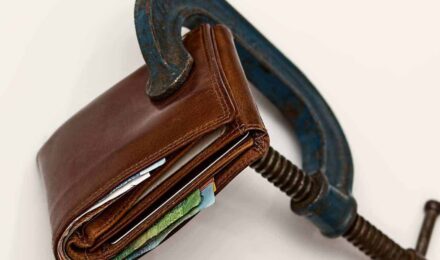The latest G.19 consumer credit report from the Federal Reserve indicates that consumer confidence is at an all-time high — and so is credit card debt. (more…)
Consumer revolving debt, which is mostly carried by credit cards, topped $1.022 trillion in November, up more than 40% just before the Great Recession began in 2008.
Is record high debt a warning of potential trouble down the road? Not necessarily, says economist Dan Mahoney.
“When you have consistent economic growth, like we’re currently experiencing, everything is going to be at all-time high levels. Lower unemployment rates, rising wages and greater consumer confidence are all key economic indicators that Americans are in a better position to take on more debt.”
It’s not just consumers who’ve been feeling more poised to take on debt in the last couple of years, banks have also been more willing to lend.
In 2016 alone, consumers opened around 110 million new credit card accounts, which is roughly 50% higher than 2010 and a higher total than in any single year since 2007, according to a recent report by the Consumer Financial Protection Bureau (CFPB). About 169 million consumers had at least one credit card as of mid-2017.
While the outstanding credit card debt, average credit line and average number of accounts have all increased the last six years, cardholding remains below pre-recession levels.
Caution on delinquencies
One side effect of growing credit card balances are delinquency rates. The CFPB reports that after falling to historical lows in the years following the recession, delinquency and charge-off rates have increased over the last year.
WalletHub reports the percentage of people 30 days past-due on their credit card payments has increased by 26% from the first quarter of 2016 through the third quarter of 2017. And the share of credit card users who are 60 or more days past-due rose by 14% over the same period.
Mahoney says delinquencies remain quite low by historical standards, and are part of a healthy expansion of the economy as credit constraints loosen. And until and delinquencies get out of balance or reach historic proportions, there’s no need to be too worried.
The standard response to an increase in delinquencies is for banks to tighten their standards for new cards and higher credit limits. A recent Fed survey on bank lending practices found that of the 52 banks that responded to questions about consumer credit cards, nine said they had tightened standards because of a less favorable or more uncertain economic outlook.
“Although nothing is clearly indicative of a coming crisis, it’s worth paying attention to and we should all be mindful of how much debt we’re taking on and our ability to repay,” Mahoney says.
Pay attention to rising rates
Interest rates are expected to keep rising in 2018 and that means debt will get more expensive.
Most credit cards base their interest charges on the prime rate, which is the interest rate that individual banks charge their most creditworthy customers, including large corporations. A rising prime rate usually means higher APRs on credit cards.
In November the average interest rate on credit card accounts was 13.16%, according to the Fed’s G.19 report. That’s an increase from 13.08% in August, which is the last time the report looked at interest rates.
Mahoney doesn’t think a quarter of a percentage rate hike will drastically affect people’s ability to make their payments, but rather it will likely temper the rate of new debt. “As demand grows it seems rates will continue to rise. Higher rates will likely cause a slowdown in the rate of new funds issued rather than causing dramatic repayment consequences.”
Still, financial experts always caution that carrying too much debt can have costly consequences and paying off your credit card balances should always be a priority.
If you’re looking to shed credit card debt in 2018, here’s a quick list of expert advice to help get you reduce and payoff your balances:
- Target one debt at a time: Focus on paying down the total balance on one card at a time by either paying the card with the lowest balance or the card with the highest APR.
- Pay more than the minimum: Every dollar over the minimum help you chip away at the balance. The smaller your balance, the less interest you pay.
- Take advantage of balance transfers: A credit card with a low-interest or 0 percent introductory period on debt transferred can be an efficient way to overcome a large credit card balance.
- Set realistic financial goals: Figure out what financial goals are most important to you and create a budget to help you meet your objectives.
[Dan Mahoney is a Senior Economist at the Government Accountability Office. The views expressed in this article are his and do not necessarily represent the views or policies of the Government Accountability Office.]






